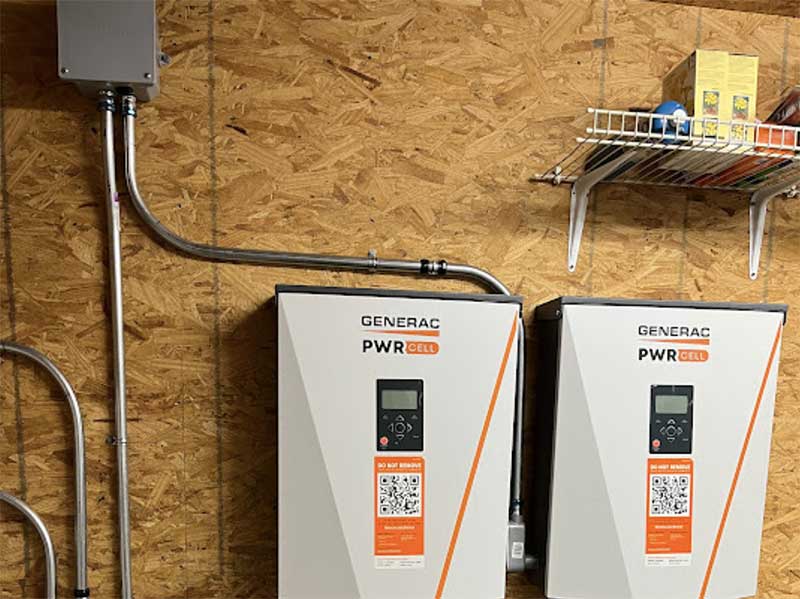Optimizing your Solar Inverter / Solar Battery Settings, Part 2:
Previously in Optimizing Your Solar Inverter / Solar Battery Settings, Part 1, we went through the basics of your solar settings with a simple explanation of goals and options. In this post, we will delve into the more detailed topics of understanding your utility and the specific settings and tools you want to utilize. Unfortunately, this is the more complex side of the discussion, mainly because the options vary from utility to utility and manufacturer to manufacturer. However, once you understand the foundations, it shouldn’t take much effort to put everything into action.
Research the Overproduction Policies of Your Utility/Electric Provider – Generally speaking, there are three different ways that states regulate electrical utilities. First, some states limit their providers like Virginia, Florida, Georgia, etc. Second, there are states where there are multiple providers but they are still limited by region with several smaller cooperatives like Tennessee. Then there are states where electrical utilities are deregulated, and you can have multiple providers for the same region, like parts of Texas. However, regardless of how your region regulates your utility, some can be considered “solar friendly”, and others unfortunately will not be. Below are the explanations between 1:1 Net Metering vs Net Billing/Net Costing vs No Buyback.
- 1:1 Net Metering – The best overproduction policy for saving money on your utility bill isn’t actually the utility writing a check, but actually having the utility credit you an even 1 kWH of production when you feed the utility and then giving you the 1 kWH back when you are not longer producing, like at night. This is why they call this policy 1:1 Net Metering, it’s a straight 1 to 1 trade for power. If your utility has this policy, your answer for battery settings is pretty simple… Use it for backup only because you won’t receive any tangible value for using your own storage and you’ll decrease the life of your battery with each use.
- Net Billing/Net Costing – Over the years, many utilities have evolved their policies away from 1:1 Net Metering to a less favorable Net Billing/Net Costing. While there are several names and applications for this policy, they all basically shift away from the 1:1 exchange, to a more utility-friendly exchange which is 20 to 50 cents on the dollar, with some describing it as “wholesale pricing”. This isn’t the moment to push back on the reasoning behind the policy, which is that there are costs for maintenance and upkeep on the utility that need to be covered, so they pay the homeowner the same amount as they buy it for from their generation facilities, but your generated power doesn’t go all the way back to their station and the only lines that are burdened by the load of your power are the ones got in from your house to your closest neighbor without solar, but I digress. Basically for the homeowner, this policy only gives you a return of whatever percent they buy power back on, and your battery will give you 100%, so using one of the self supplying modes would be a better strategy to save on your bill.
- No Buyback – To be clear, as frustrating as the utilities who have a Net Billing/Net Costing policy are, the states that have the No Buyback policy are absolutely infuriating… Basically, in these regions, any amount of excess production you make will be harnessed by the utility, and will be delivered to your neighbors for no compensation for you. There are only a handful of states that allow this policy, however, there are many states that legislatively have converted to it, like Tennessee in 2019, and others that are on a pathway to it like Indiana. To be fair, some regions actually don’t allow for overproduction to be delivered to the grid, which means they are not receiving and reselling your power, so the No Buyback is more of an inconvenience than an abuse of authority. In these regions, it is vital that a properly trained and seasoned solar designer be involved in the project and the battery needs to be utilized to Maximize Energy Savings with this policy as well.
Test Your Settings for a Predetermined Amount of Time – Now we have a goal and we understand how the utility is going to work with us to achieve that goal, so it’s time to jump into the system and explore our settings.
- Self Supply and Self Consumption vs TOU Schedule and Savings Mode – For one reason or another, manufacturers have different names for the same modes which can get pretty confusing. To keep it simple, one mode will utilize the battery bank to supply the home indiscriminately, and the other will allow you to schedule when to use the battery mode to correspond with your utilities favorable billing cycle like peak hours or free nights. This is where knowing your utilities billing and overproduction options can really help you save. Some utilities offer different billing plans, and with a solar and battery installation, a homeowner really has an advantage with getting the most from those plans. One quick thing of note to remember though, if you have 1:1 Net Metering, these settings might be moot unless your system isn’t big enough to overproduce and you have chosen a peak billing plan with your provider.
- Outage Guard and Storm Guard – To offer the best of both worlds to their customers, some manufacturers have installed a weather tracking feature that will automatically switch their system from a supply mode to a backup mode when a potential utility failure event is recognized. With Generac the setting is called “Outage Guard” and with Enphase it is called “Storm Guard”. For most people, these are high value offerings, but they do have a few limitations. First, the weather man has been known to be wrong sometimes, which means there will be times when the mode switches without an absolute weather threat and there will be times where it wont switch when there is one. Second, it cannot predict non-weather affiliated events like trees, car accidents, transformer failure, etc. Third, there might be a minimal unexpected cost if you have programmed your system to switch to a backup mode that utilizes both solar and the grid to charge the battery, and it switches at night or during inclement weather. Personally, I think it is worth it, but it still needs to be acknowledged.
- Depletion Limits – Most manufacturers give you the ability to set limits on your battery use. These limits are especially important when determining your tolerance for backup capability. A higher depletion limit will allow you to maintain a higher backup capability and a lower limit will maximize savings for the most part. If you are utilizing a peak billing plan with your utility, this is a great feature to help in getting the most out of it. **Note: Especially on a DC coupled system, you never want to set your depletion all the way down to zero, because the system will lose the ability to actively check for sunlight. If this does ever happen, most systems have an emergency Blackstart feature however.**
- Clean Backup and Full Backup Mode – When a homeowner wishes to limit their backup capability to only what can be provided by solar, that is Clean Backup for Generac and Full Backup for Enphase. Basically what this mode does is prioritize the house for power, but it will divert all the excess energy to the battery. Then, unlike the other modes that will discharge the battery as needed to maximize savings, this mode will store the energy for a blackout event. For homeowners who have a utility that does 1:1 Net Metering, this is most likely the optimal mode for you unless you wish to use the grid to keep your battery bank charged.
- Priority Backup and Full Backup w/ Charge Battery From Grid Enabled (In Advanced Settings within Enphase) – The final mode for most systems is your optimal backup mode. In this mode, your system will use all available power to replenish the battery, prioritizing solar, but supplementing with utility when it is available. In combination with the outage guard, this is a pretty useful mode if there are concerns of power loss overnight, concerns about long term inclement weather, and if the homeowner is in an area with rolling blackouts. The upside is optimal use for backup capability of the battery; the downside is that the grid will charge you whatever rate is active to recharge the battery.
I am glad we could help answer the most common questions about getting the most out of your solar w/ battery system. If there are other questions surrounding this topic that we didn’t answer, or if you have other topics you would like us to cover, please don’t hesitate to submit an inquiry on our contact page!
Fred West
Owner/CEO The Solar Agents



